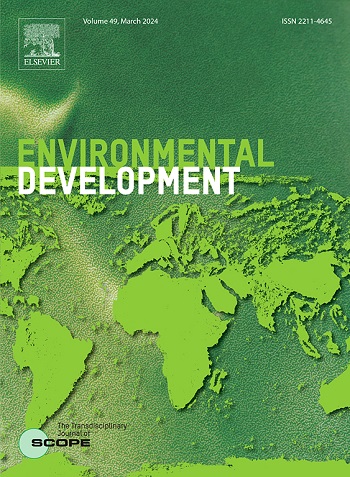基于文献计量分析和网络制图的大豆生物精炼和技术预测
IF 5.3
2区 环境科学与生态学
Q2 ENVIRONMENTAL SCIENCES
引用次数: 0
摘要
全球变暖和日益严重的污染已成为严重的全球性问题,加上传统能源的枯竭,加快了采用生物精炼厂等更具可持续性的生产系统的步伐。生物精炼厂有能力在单一设施内整合各种技术和工艺,从而生产生物燃料、高附加值化工产品和能源。本研究旨在通过文献计量分析和网络制图来评估大豆生物精炼厂的各种方案,以促进和实施技术预测。为实现这一目标,我们采取了八个方法步骤。所审查的大多数研究主要涉及大豆秸秆和豆壳的利用,其动机是需要解决与处理大量这些残留物有关的环境挑战。关于大豆乳清应用的研究也很重要,主要是因为它与大豆分离蛋白有关。已确定的七种最有前途的技术途径是纳米复合材料、过氧化物酶、乙醇、绿色复合材料、生物炭、薄膜和生物柴油。因此,研究结果为今后整合大豆衍生残留物、工艺和产品的研究提供了文献基础,可促进生物精炼框架内的创新,并带来工艺上的重要进步。本文章由计算机程序翻译,如有差异,请以英文原文为准。
Soybean biorefinery and technological forecasts based on a bibliometric analysis and network mapping
Global warming and increasing pollution have become critical global issues, and, coupled depletion of traditional energy sources, have accelerated the adoption of more sustainable production systems, such as biorefineries. Biorefineries possess the capacity to integrate technologies and processes within a single facility, thereby generating biofuels, high-value-added chemical products, and energy. The current study aims to evaluate various scenarios of soybean biorefineries by employing a bibliometric analysis and network mapping to facilitate and implement technological forecasting. To achieve this objective, eight methodological steps were undertaken. The majority of studies reviewed were primarily concerned with the utilization of soybean straw and hulls, motivated by the need to address environmental challenges related to the disposal of substantial volumes of these residues. Research on the application of soy whey also emerged as significant, mainly due to its connection with soy protein isolates. The seven most promising technological avenues identified were nanocomposites, peroxidases, ethanol, green composites, biochar, films, and biodiesel. Consequently, the findings provide a bibliographic foundation for future research on the integration of soybean-derived residues, processes, and products, which could foster innovation within the biorefinery framework and lead to crucial advancements in the processes.
求助全文
通过发布文献求助,成功后即可免费获取论文全文。
去求助
来源期刊

Environmental Development
Social Sciences-Geography, Planning and Development
CiteScore
8.40
自引率
1.90%
发文量
62
审稿时长
74 days
期刊介绍:
Environmental Development provides a future oriented, pro-active, authoritative source of information and learning for researchers, postgraduate students, policymakers, and managers, and bridges the gap between fundamental research and the application in management and policy practices. It stimulates the exchange and coupling of traditional scientific knowledge on the environment, with the experiential knowledge among decision makers and other stakeholders and also connects natural sciences and social and behavioral sciences. Environmental Development includes and promotes scientific work from the non-western world, and also strengthens the collaboration between the developed and developing world. Further it links environmental research to broader issues of economic and social-cultural developments, and is intended to shorten the delays between research and publication, while ensuring thorough peer review. Environmental Development also creates a forum for transnational communication, discussion and global action.
Environmental Development is open to a broad range of disciplines and authors. The journal welcomes, in particular, contributions from a younger generation of researchers, and papers expanding the frontiers of environmental sciences, pointing at new directions and innovative answers.
All submissions to Environmental Development are reviewed using the general criteria of quality, originality, precision, importance of topic and insights, clarity of exposition, which are in keeping with the journal''s aims and scope.
 求助内容:
求助内容: 应助结果提醒方式:
应助结果提醒方式:


